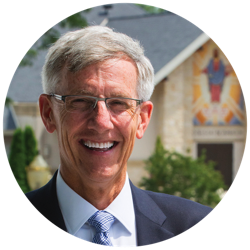Searching for the “right fit” for your undergraduate education is not an easy task. There are a variety of factors to consider ranging such as academic offerings, student activities available, and geographic location. With over 5,500 colleges and universities in the Untied States and over 220 of them associated with the Catholic tradition…your choices are plentiful. While everyone will have a view of how you prioritize the areas that are important to you, in the end it will be your judgments that decide what is most important.
As you reflect upon the Catholic colleges and universities you are examining, my Collins College Report Card tool offers you my ACE framework for your search process: Alignment, Culture, and Engagement with the Christian tradition. The framework is intended to help you identify and prioritize what you can observe as factoids that will be critical to the final institutional selection. But what do I mean by “alignment,” anyway?
Emerging from my research is the realization that a college or university that asserts to be operating in a Catholic tradition will be able to connect for you its stated purpose (found on the ABOUT page of a school’s website) with the academic objectives (found on the ACADEMICS page of the school’s website) and the acceptance of the student leaders (through your discovery process when you talk to students). This “alignment” of activities has always been present in the past…you should be able to find it in the present.
History tells us that the Catholic Church has been very involved in education since its founding in A.D. 33. After centuries of simply preserving and transmitting knowledge, the Catholic Church initiated the activities associated with generating knowledge. This led to the inaugural university at Bologna in the 11th century. Catholic higher education came to the United States in the 18th century.
In 1990, St. Pope John Paul II wrapped up centuries of writing and thinking for us on what it means to be a Catholic college or university in a single document he published. For a Catholic college or university, for instance, he said that a Christian inspiration should be traceable to the school’s heritage or through the current deeds of the campus community. Echoes of its demonstrative Catholic faith may be seen in its teaching and scholarship. Fidelity to the teachings of the Church as well as the commitment to service may be present in various forms such as its programs, policies, and publications.
But how do you ensure that what the school “stands for” is reflected in its educational offerings? By looking for institutional alignment—what the faculty and staff seek to accomplish as well as how the student body will respond—while simultaneously connecting the local effort with the global Church.
And where might you begin when making a determination as to its alignment with the Catholic Church? The starting point is the mission statement. While acknowledging that no single key attribute confirms assent to the Magisterium of the Catholic Church, the mission statement is the one predominant institutional marker that serves to clarify an institutional understanding of its “Catholic-ness.”
An alignment…a connection…to the Catholic tradition is apparent if you can answer affirmatively a few simple questions. Does the mission statement acknowledge its roots: either its Christian heritage or the values of its Founding Order? Is there a Christian inspiration in what it seeks to achieve? Does it acknowledge it’s “Catholic” positioning amongst all the other colleges and universities in America? Does the mission statement communicate the sense that the institution seeks the essence of engaging and serving others?
Not every mission statement will answer “yes” to these four questions, but it would be ideal if it did!
Here are some things to look for in trying to answer these questions that will be foundational to understanding if the school is “aligned” with the Catholic tradition. Campus documentation of programs and policies frequently begins with a restatement of the college mission. On the campus grounds, there are signs and symbols of the Catholic faith attached to buildings, with stand-alone sculptures, in the naming conventions, and the presence of a large centrally located chapel. The core curriculum emphasizes the Catholic intellectual tradition. Student activities include opportunities to support the poor, the handicapped, the marginalized, and those in distress, as well as a host of spiritual activities that center on growing in the Catholic faith. Student involvement in these activities is noteworthy. Diversity in the co-curricular program supports student participation from small groups to large contingents. There are plenty of other examples…to which I summarize as the first 5 of the 15 signal features (Point to Manifestations Reflective of Teachings and Service) that emerged from my research and are in the Collins College Report Card.
If you see examples such as these during your search process, then you are seeing relationships that suggest an alignment of the Catholic college or university with the Catholic Church. This is an important “first step” for finding a college or university that “walks the talk.”

